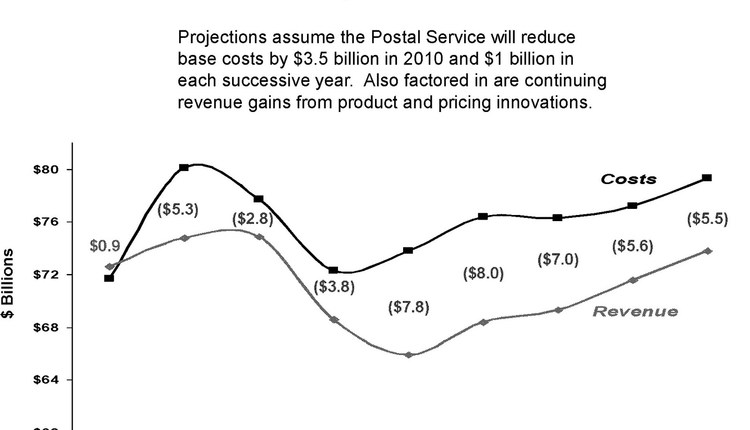In order to understand the future of mail, one needs to first understand the future of the document. The word "document" immediately conjures up an image of a written, printed format. That image is too narrow in today's multi-codal communications world, which includes information that can be provided printed on paper but also in numerous forms on a computer display or in text messages, or other formats on a wireless smart phone.
At last year's DOCUMENT Strategy Forum in Chicago, Craig Le Clair of Forrester Research illustrated that companies develop three types of documents:
- Structured documents - identical or nearly identical documents that are sent to a large number of recipients at the same time
- On-demand documents - documents that are created in a way that allows the recipient to receive the document on their own schedule
- Interactive documents - documents that use personalized information to create a document designed for one person
A fourth type of document, called TransPromo, represents an interaction between structured and interactive documents. These documents reflect the ability of new digital printers to develop personalized documents but print them as if they were a structured document. As such, they neither fit the structured or interactive category but fall somewhat in between.
Mailed documents are primarily structured documents and, to a lesser extent, interactive documents. In both types of documents and the TransPromo documents that fall in between, the sender determines the schedule that the recipient receives the document.
The recent declines in mail volumes and shifts in mail mix reflect the growth of on-demand documents and a shift from structured and interactive mailed documents to their electronic alternative, email.
Shift from Structured to On-demand Documents
The documents that have shifted rapidly in this direction include financial payments and printed news and opinion, price lists and big-book catalogs. Travel and college brochures and catalogs are other examples of structured documents that have been replaced with websites that allow the recipient of the message to view information that once was printed.
Shift from Interactive to On-demand Documents
The entire process of distributing specific prices to specific customers has changed so that much of this is produced. The use of web forms allows customers to do the paperwork on their own schedules; before, this required printing in an office. Just think of how different the process is of opening a bank or brokerage account or making changes to the account. While a bank officer can combine personal information into the loan documents in the branch off of the bank's computer, individuals can now do it on their own schedule without requiring the bank employee to act as an intermediary.
Shift from Mailed Interactive to Emailed Interactive
This is the shift of personalized documents from printed to electronic form. Business correspondence reflects this change. Also, collaboratively produced documents that once were sent as hard copy to other writers by mail or Express are now sent as file attachments that all parties can edit electronically, allowing the original author to make changes faster than ever before. Email also allows writers to use structured electronic documents, whether in the form of PDF files that cannot be altered by the recipients or in formats that are less restrictive.
Shift from Mailed Structured to Emailed Structured
Emailed structured documents are mass mailings from one sender to many recipients. These documents include: notices of bills and statements; e-newsletters; notices of new web content that is available for viewing; advertisements from vendors from whom the recipient has allowed to receive email; and pernicious spam promoting get-rich-quick schemes or spreading viruses. In many ways, structured email is nothing more than an electronic glossy envelope. The real content is either an attachment or on a site which can be accessed by clicking on a link within the message. The one problem that senders have with emailed interactive and structured documents is that the recipient treats the messages, attachments and links in a similar fashion to on-demand web content.
The more email that the recipient gets, the more likely that a particular message will be ignored until after the sender would like the email viewed. The sender wants the recipient to look at the attachment or click on the link and take the appropriate action. For example, companies that email bills want the link clicked so that the bill is viewed and paid. Advertisers want the advertisement clicked so that the advertisement is read and a sale is made.
Senders of electronic documents have found that mail can help increase the value of the documents that they have shifted to electronic formats. Mail sent in conjunction with emails increases the sales that the email generates. Websites that offer a full catalog of products, describe a college, provide information on resorts or the schedule of a theater or outside venue will more likely be accessed if potential customers receive mail enticing them to look. The combination of mail with email and website content is receiving the greatest attention among advertisers, but those sending bills and statements may find that combining postcards with email bills may increase the speed that customers pay.
The mail sent from now on will be different. Many mailers will find that electronic delivery is sufficient without supplementary encouragement of mail. For these senders, mail will become a legacy delivery method available only to existing customers who have not chosen to switch to electronic delivery or to those new customers that request it. This is the expected direction of transactional mail, which represents over half of First Class volumes.
Those customers that still use printed mail will use formats that are smaller and lighter, generating less postage per piece. The proportion of letters, flats and cards will shift as customers experiment with formats that minimize their paper, printing and postage costs. J.C. Penney has announced that this fall, it will send its last big book. They are not abandoning mail but instead will send smaller specialty catalogs tailored to the interests of the recipient, directing them to the website for both a wider selection of options and the order process. Also, Eddie Bauer has replaced some of its catalogs with postcards that direct the recipient to the website to see all of the deals available.
In the next six months, various parties will propose business models for the Postal Service. The viability of these models will depend on whether they will allow the USPS to adjust fast enough to decisions senders make regarding how they will produce and send documents and the impact that this will have on mail volumes, Postal Service revenues and the operating networks necessary to sell, collect, transport, sort and deliver mail.
Alan Robinson is President at Direct Communications Group. Email him at alan.robinson@directcomgroup.com




